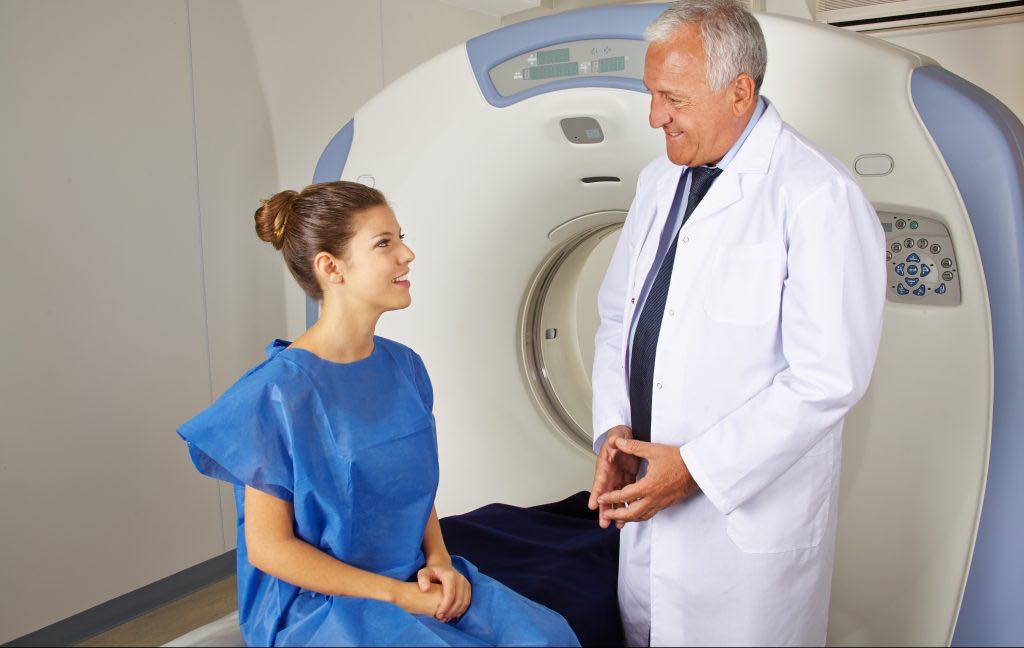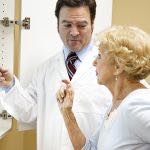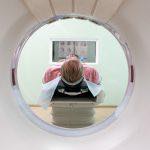Doctors recommend PET scans and CT scans for patients on a regular basis. The number of CT scans performed annually is now more than 70 million according to the Center for Radiological Research. Annual PET scans are done less often at about 2 million annually.
There are several key differences in a PET scan vs. CT scan. From the purpose behind ordering the test to the way they are used in treatment, these scans have the potential to reveal the way your body is functioning for diagnosis, long-term treatment, and management of health conditions. Below, learn more about the two types of scans and when they’re used.
What is a PET scan?
Positron emission tomography, commonly referred to as a PET scan, is a type of medical imaging used for evaluating organ function and tissue function. PET scans are considered nuclear medicine because they use small doses of radioactive substances to track movement throughout the body. The scan measures bodily functions including glucose level, metabolism, oxygenation in the blood, and blood flow.
One distinct feature of the PET scan is its potential to give information at the molecular level. These radiotracers combine with a special camera and a computer to read the results. Radiotracers are added to the body in more than one way, either through IV, swallowing or as a gas.
What is a CT scan?
A computed tomography, or CT scan, uses a form of x-ray equipment in combination with computer imaging to see cross-sections of the body. Mayo Clinic states, “a CT scan can be used to visualize nearly all parts of the body and is used to diagnose disease or injury as well as to plan medical, surgical, or radiation treatment.”
CT scans begin with 2D imaging that is used to create 3D cross-sections to reveal the organs, blood vessels, and bones. There is a slight exposure to radiation as a result of the scan and some make use of contrast dye (typically made of iodine) to highlight certain parts of your body.
PET and CT scans are often used in combination with one another
When combined, a PET scan and a CT scan, also called a PET/CT scan, make for a powerful diagnostic tool that can be used to diagnose and monitor various medical conditions. Image fusion occurs when doctors take a PET scan and superimpose a CT scan in order to get a more comprehensive view. Radiologists can interpret a PET/CT scan in one overlayed image and be more exact in their treatment plan. Interpreting in one message allows for a radiologist to assess two types of functions at once.
In some cases, both scans can be completed at the same time. It depends on the capability of the facility and a medical need for both scans. “PET/CT provides the anatomical framework within which the biology of cancer can be visualized by PET. This powerful combination will be used to further refine diagnostic, prognostic, intermediate endpoint, and predictive biomarkers in cancer patients,” states the University of California in Current Radiological Reports.
PET scan vs. CT scan: contrasting agents
A major difference between a PET scan and a CT scan is the contrasting agents used in the body. A PET scan uses small amounts of radioactive substances, called contrast materials, for contrast within the body. While it sounds scary, the tracer typically leaves your body a few hours after the scan. In the United States, all radiotracers used in PET scans are approved by the FDA after clinical studies.
Sometimes, a CT scan makes use of iodinated contrast agents. These are administered through an IV and move throughout the bloodstream. According to the Mayo Clinic Proceedings Journal, “by far the most successful and widely applied contrast agents in use today are the iodinated contrast agents (ICAs)…approximately 75 million doses are given worldwide each year.”
When compared directly, the CT scan and PET scan look similar because they both involve the use of contrasting agents, but the type you get depends on your scan.
PET scan vs. CT scan: diagnostic purposes
Physicians order each type of scan for different purposes. While they can be ordered in combination with one another, PET scans and CT scans do have distinct diagnostic purposes. Some of the reasons for ordering a PET scan, according to Johns Hopkins, include:
- Diagnosis of Parkinson’s, dementia, Huntington’s disease, and Alzheimer’s
- Look for cancer spreading after an original diagnosis
- To check if cancer treatment is working effectively
- Assess the blood flow being directed to the heart
- Analysis for lung damage or lesions
The symptoms presented by the patient may also require a CT scan. According to Mayo Clinic, a doctor may order a CT scan to:
- Detect bone injuries on delicate parts of the body
- Check for soft tissue damage to the body
- Find tumors before and during surgery
- During cancer treatment for chemotherapy response and radiation dosage
- Discover skeletal diseases based off of bone density
- Check for brain trauma or damage, potentially post-accident
- Find the exact location of a tumor
PET scan vs. CT scan: use in cancer imaging and treatment
Oncologists may order both PET scans and CT scans for their cancer patients. Both scans can help monitor the impact of cancer treatment on the body. “The PET scan shows the presence of cancer cells throughout the body but a CT scan will reveal abnormal tissue and detail images,” says Cleveland Clinic. It is now common for cancer patients to visit PET/CT imaging centers. This allows the opportunity for patients to get both tests at the same time.
PET scan vs. CT scan: what should you pay?
New Choice Health allows you to search for and compare facilities for the medical procedure you need, which can save you between hundreds and thousands of dollars. Whether you have health insurance or are paying out-of-pocket, use New Choice Health to find a fair price on your PET scan or CT scan today.






